|
|
|
Oxford University Press
|
This is a stunningly beautiful book featuring the lyrics from What a Wonderful World, accompanied by joyful illustrations from award-winning illustrator Tim Hopgood. It follows one little boy as he discovers just how wonderful this world of ours can be. The book comes with an accompanying CD which includes the much-loved recording of the song by Louis Armstrong and an exclusive reading by Sophie Aldred. |

|
Winnie is fascinated by space and she decides the time is right for a little space exploration. Wilbur is not so sure. Winnie's magical rocket is quite tricky to steer through the universe and poor Wilbur can't even bear to look. He feels a little less anxious when they land on a faraway planet and Winnie unpacks their special space picnic. The inhabitants of the planet are small, with long ears and twitchy noses. They're curious and friendly but these space rabbits have rather strange eating habits — they munch on metal! And, for the space rabbits, Winnie's rocket is particularly tasty. So when it is nibbled clean away, Winnie has to use some quick thinking and some magic to keep the rabbits happy and to rustle up an alternative means of getting home. This glorious galactic picture book takes Winnie and Wilbur on an amazing journey into outer space. But however exciting flying saucers, shooting stars and space rabbits might be, Winnie's a witch who knows there's no place like home! |
|
Publication Date: 3 Aug 2006 | Series: Winnie the Witch This fantastic volume includes six of Winnie and Wilbur's crazy capers. Meet them in their black house, take a hazardous ride on Winnie's broomstick, join them on a hot and sunny winter's day, find out what happens when Winnie's wand stops working, discover how much chaos a computer can cause and spend a day with them at the seaside! This collection is a must-have purchase for Winnie fans everywhere and, for those who have yet to meet everyone's favourite witch, it is a book that is guaranteed to make readers the best of friends with Winnie and her big black cat, Wilbur! |
|
With stunning illustrations from David Roberts, and a sparkling new text from Tom Moorhouse, this is a glorious picture-book edition of The Wind in the Willows. Kenneth Grahame's children's classic has all the ingredients you need to make a perfect picture book — great characters, humour, lots of adventure, and a heartwarming message about the true value of friendship. This is the perfect book to introduce a really young audience to Mole, Ratty, Badger and, of course, Mr Toad. |
|
This volume presents the Greek text of approximately 200 stone inscriptions, which detail the laws of ancient Crete in the archaic and classical periods, c.650-400 BCE. The texts of the inscriptions, many of which are fragmentary and relatively unknown, are accompanied by an English translation and also two commentaries; one focused on epigraphical and linguistic issues, and the other, requiring no knowledge of Greek, focused on legal and historical issues. The texts are preceded by a substantial introduction, which surveys the geography, history, writing habits, social and political structure, economy, religion, and law of Crete in this period. |

|
Max is a four-year-old whirlwind who doesn't have an off switch! His socks are odd, his bedroom is chaotic, and his mind is so full of imaginative schemes that following even the simplest of instructions can end in mayhem. Max's bedtime routine, so seemingly simple, becomes a military operation for Max with many obstacles to overcome — tidying his bedroom, putting on his pyjamas, and feeding his pet goldfish! Illustrated with non-stop energy by exciting new author/illustrator, Julia Patton. |
|
Oxford Read and Imagine graded readers are at eight levels (Starter, Beginner, and Levels 1 to 6) for students from age 4 and older. They offer great stories to read and enjoy. Activities provide Cambridge Young Learner Exams preparation. |
|
A fresh new look for the Oxford Very First Dictionary which introduces children aged 4+ to the features of a dictionary in an appealing way. The dictionary has over 300 familiar words, each with a simple definition and an illustration which reinforces the definition. Each page is clearly laid out so it is easy to pick out the main features — the alphabet down the side of the page, the letter of the page you are on in red. A lovely extra for this age level is the illustrated opening letter — A shows a juicy apple, B shows some buzzing bees. There is also a fully illustrated section at the end with vocabulary on topics related to first learning, e.g. colours, numbers, shapes, days and months, as well as a list of common words and a simple introduction to grammar with a list of verbs or 'doing words'. This is a great introduction to the world of dictionaries. |
|
This new edition of Tom Hutchinson's bestselling course combines all the aspects that students and teachers loved from the previous edition with exiting new digital components, extra resources and more teacher support than ever before. Your students will love watching the new animated Mickey, Millie and Mut and Sweet Sue and Smart Alex cartoons. In later levels of the course the cartoons are replaced with dramatized episodes of Kids, the photo-story from the Student's Book. For your kinaesthetic learners there are new fun total physical response pronunciation activities in the pronunciation bank at the back of the Student's Book. Other students will enjoy reading the stories in the extensive reading bank. And you will love all the teacher support available with Project fourth edition. Use digital resources more effectively in your lessons with the digital workshops that give you step by step guides to using some of the most educationally beneficial sites on the internet as well as ideas for how you can use them with the projects in the Student's Book. |

|
The topic of stem cells has been very high profile in the media in recent years. There is much public interest in stem cells but also much confusion and misinformation, with some companies already offering 'stem cell products' and bogus 'stem cell therapies'. In this Very Short Introduction, Jonathan Slack introduces stem cells; what they are, what scientists do with them, what stem cell therapies are available today, and how they might be used in future. Despite important advances, clinical applications of stem cells are still in their infancy. Most real stem cell therapy today is some form of bone marrow transplantation. Slack introduces stem cells by explaining the difference between embryonic stem cells, which exist only in laboratory cultures, and tissue-specific stem cells, which exist in our bodies. Embryonic stem cells can become any cell type in the body, so diseases that may in future be treated by functional cells derived from these sorts of stem cell include diabetes, Parkinson's disease, heart disease, and spinal trauma. He then goes on to discuss the properties of tissue-specific stem cells and the important technique of bone marrow transplantation. Slack concludes by analysing how medical innovation has occurred in this area in the past, and draws out some of the lessons for the development of new therapies in the future. ABOUT THE SERIES: The Very Short Introductions series from Oxford University Press contains hundreds of titles in almost every subject area. These pocket-sized books are the perfect way to get ahead in a new subject quickly. Our expert authors combine facts, analysis, perspective, new ideas, and enthusiasm to make interesting and challenging topics highly readable. |
|
Most people remember chemistry from their schooldays as largely incomprehensible, a subject that was fact-rich but understanding-poor, smelly, and so far removed from the real world of events and pleasures that there seemed little point, except for the most introverted, in coming to terms with its grubby concepts, spells, recipes, and rules. Peter Atkins wants to change all that. In this Very Short Introduction to Chemistry, he encourages us to look at chemistry anew, through a chemist's eyes, in order to understand its central concepts and to see how it contributes not only towards our material comfort, but also to human culture. Atkins shows how chemistry provides the infrastructure of our world, through the chemical industry, the fuels of heating, power generation, and transport, as well as the fabrics of our clothing and furnishings. By considering the remarkable achievements that chemistry has made, and examining its place between both physics and biology, Atkins presents a fascinating, clear, and rigorous exploration of the world of chemistry — its structure, core concepts, and exciting contributions to new cutting-edge technologies. ABOUT THE SERIES: The Very Short Introductions series from Oxford University Press contains hundreds of titles in almost every subject area. These pocket-sized books are the perfect way to get ahead in a new subject quickly. Our expert authors combine facts, analysis, perspective, new ideas, and enthusiasm to make interesting and challenging topics highly readable. |
|
Microscopy is a dynamic area of science, incorporating both basic classroom microscopes and sophisticated research style instruments that can be driven by light, electrons, or X-rays. The rate of advance in the area over the last 50 years has led to a number of technological advances. In this Very Short Introduction Terence Allen, an established expert on microscope techniques, describes the scientific principles behind the main forms of microscopy, and the exciting new developments in the field. Focusing on the main underlying principles, and introducing the power of what is achievable today using microscopes, Allen demonstrates how microscopy impinges on almost every aspect of our daily lives; from medical diagnosis to quality control in manufacture. Beginning with a brief history of the early stages of microscopy development, Allen then concludes with a comprehensive account of the diverse spectrum of microscopy available today. ABOUT THE SERIES: The Very Short Introductions series from Oxford University Press contains hundreds of titles in almost every subject area. These pocket-sized books are the perfect way to get ahead in a new subject quickly. Our expert authors combine facts, analysis, perspective, new ideas, and enthusiasm to make interesting and challenging topics highly readable. |
|
In this compelling introduction to the fundamental particles that make up the universe, Frank Close takes us on a journey into the atom to examine known particles such as quarks, electrons, and the ghostly neutrino. Along the way he provides fascinating insights into how discoveries in particle physics have actually been made, and discusses how our picture of the world has been radically revised in the light of these developments. He concludes by looking ahead to new ideas about the mystery of antimatter, the number of dimensions that there might be in the universe, and to what the next 50 years of research might reveal. ABOUT THE SERIES: The Very Short Introductions series from Oxford University Press contains hundreds of titles in almost every subject area. These pocket-sized books are the perfect way to get ahead in a new subject quickly. Our expert authors combine facts, analysis, perspective, new ideas, and enthusiasm to make interesting and challenging topics highly readable. |
|
The animal world is immensely diverse, and our understanding of it has been greatly enhanced by analysis of DNA and the study of evolution and development ('evo-devo'). In this Very Short Introduction Peter Holland presents a modern tour of the animal kingdom. Beginning with the definition of animals (not obvious in biological terms), he takes the reader through the high-level groupings of animals (phyla) and new views on their evolutionary relationships based on molecular data, together with an overview of the biology of each group of animals. The phylogenetic view is central to zoology today and the volume will be of great value to all students of the life sciences, as well as providing a concise summary for the interested general reader. ABOUT THE SERIES: The Very Short Introductions series from Oxford University Press contains hundreds of titles in almost every subject area. These pocket-sized books are the perfect way to get ahead in a new subject quickly. Our expert authors combine facts, analysis, perspective, new ideas, and enthusiasm to make interesting and challenging topics highly readable. |
|
Law has played a central role in American history. From colonial times to the present, law has not just reflected the changing society in which legal decisions have been made-it has played a powerful role in shaping that society, though not always in positive ways. Eminent legal scholar G. Edward White-author of the ongoing, multi-volume Law in American History-offers a compact overview that sheds light on the impact of law on a number of key social issues. Rather than offer a straight chronological history, the book instead traces important threads woven throughout our nation's past, looking at how law shaped Native American affairs, slavery, business, and home life, as well as how it has dealt with criminal and civil offenses. White shows that law has not always been used to exemplary ends. For instance, a series of decisions by the Marshall court essentially marginalized Amerindians, indigenous people of the Americas, reducing tribes to wards of the government. Likewise, law initially legitimated slavery in the United States, and legal institutions, including the Supreme Court, failed to resolve the tensions stirred up by the westward expansion of slavery, eventually sparking the Civil War. White also looks at the expansion of laws regarding property rights, which were vitally important to the colonists, many of whom left Europe hoping to become land owners; the evolution of criminal punishment from a public display (the stocks, the gallows) to a private prison system; the rise of tort law after the Civil War; and the progress in legal education, moving from informal apprenticeships and lax standards to modern law schools and rigorous bar exams. In this illuminating look at the pivotal role of law in American life, White offers us an excellent first step to a better appreciation of the function of law in our society. About the Series: Oxford's Very Short Introductions series offers concise and original introductions to a wide range of subjects--from Islam to Sociology, Politics to Classics, Literary Theory to History, and Archaeology to the Bible. Not simply a textbook of definitions, each volume in this series provides trenchant and provocative--yet always balanced and complete--discussions of the central issues in a given discipline or field. Every Very Short Introduction gives a readable evolution of the subject in question, demonstrating how the subject has developed and how it has influenced society. Eventually, the series will encompass every major academic discipline, offering all students an accessible and abundant reference library. Whatever the area of study that one deems important or appealing, whatever the topic that fascinates the general reader, the Very Short Introductions series has a handy and affordable guide that will likely prove indispensable. |
|
For four centuries Britain was an integral part of the Roman Empire, a political system stretching from Turkey to Portugal and from the Red Sea to the Tyne and beyond. Its involvement with Rome started long before the Conquest launched by the Emperor Claudius in 43 AD, and it continued to be a part of the Roman world for some time after the final break with Roman rule. Bringing together archaeological investigation and historical scholarship, Peter Salway explores some of the key issues arising from this period in Britain's history, discussing the question of identity at this time and analysing the importance of widespread literacy in Roman Britain. Covering the period from Julius Caesar's first forays into Britain and Claudius' subsequent conquest, as well as Britain under the later Roman Empire, Salway outlines the key events of this time period, providing a focus on society in Roman Britain, and offering a thoughtful consideration of the aftermath of Roman rule. In the new edition of this Very Short Introduction, Peter Salway makes a number of essential updates in light of recent research in the area. He looks at issues of ethnicity, 'Britishness', and post-colonialism, provides alternative theories to the end of the Roman period in Britain, and draws parallels between the history of Roman Britain and a wide range of other periods, territories, and themes, including the modern experience of empires and national stereotypes. ABOUT THE SERIES: The Very Short Introductions series from Oxford University Press contains hundreds of titles in almost every subject area. These pocket-sized books are the perfect way to get ahead in a new subject quickly. Our expert authors combine facts, analysis, perspective, new ideas, and enthusiasm to make interesting and challenging topics highly readable. |
|
This Very Short Introduction offers a powerfully-written explanation of the war's complex origins and course, and explores its impact on a personal and international scale. It also provides an ethical reflection on the war in the context of Europe's tumultuous twentieth century, highlighting why it has inspired some of the greatest writers of our time, and how it continues to resonate today in Britain, continental Europe, and beyond. Throughout the book, the focus is on the war as an arena of social change where ideas about culture were forged or resisted, and in which both Spaniards and non-Spaniards participated alike. These were conflicts that during the Second World War would stretch from Franco's regime, which envisaged itself as part of the Nazi new order, to Europe and beyond. Accordingly, this book examines Spanish participation in European resistance movements during World War II and also the ongoing civil war waged politically, economically, judicially and culturally inside Spain by Francoism after its military victory in 1939. History writing itself became a battleground and the book charts the Franco regime's attempt to appropriate the past. It also indicates its ultimate failure — as evident in new writings on the war and, above all, in the return of Republican memory now occurring in Spain during the opening years of the twenty-first century. ABOUT THE SERIES: The Very Short Introductions series from Oxford University Press contains hundreds of titles in almost every subject area. These pocket-sized books are the perfect way to get ahead in a new subject quickly. Our expert authors combine facts, analysis, perspective, new ideas, and enthusiasm to make interesting and challenging topics highly readable. |

|
From around 900 to 400 BC, the Etruscans were the most innovative, powerful, wealthy, and creative people in Italy. Their archaeological record is both substantial and fascinating, including tomb paintings, sculpture, jewelry, and art. In this Very Short Introduction, Christopher Smith explores Etruscan history, culture, language, and customs. Examining the controversial debates about their origins, he explores how they once lived, placing them within the geographical, economic, and political context of the time. Smith concludes by demonstrating how the Etruscans have been studied and perceived throughout the ages, and the impact this has had on our understanding of their place in history. About the Series: Oxford's Very Short Introductions series offers concise and original introductions to a wide range of subjects--from Islam to Sociology, Politics to Classics, Literary Theory to History, and Archaeology to the Bible. Not simply a textbook of definitions, each volume in this series provides trenchant and provocative--yet always balanced and complete--discussions of the central issues in a given discipline or field. Every Very Short Introduction gives a readable evolution of the subject in question, demonstrating how the subject has developed and how it has influenced society. Eventually, the series will encompass every major academic discipline, offering all students an accessible and abundant reference library. Whatever the area of study that one deems important or appealing, whatever the topic that fascinates the general reader, the Very Short Introductions series has a handy and affordable guide that will likely prove indispensable. |
|
Poststructuralism changes the way we understand the relations between human beings, their culture, and the world. Following a brief account of the historical relationship between structuralism and poststructuralism, this Very Short Introduction traces the key arguments that have led poststructuralists to challenge traditional theories of language and culture. Whilst the author discusses such well-known figures as Barthes, Foucault, Derrida, and Lacan, she also draws pertinent examples from literature, art, film, and popular culture, unfolding the postructuralist account of what it means to be a human being. ABOUT THE SERIES: The Very Short Introductions series from Oxford University Press contains hundreds of titles in almost every subject area. These pocket-sized books are the perfect way to get ahead in a new subject quickly. Our expert authors combine facts, analysis, perspective, new ideas, and enthusiasm to make interesting and challenging topics highly readable. |
|